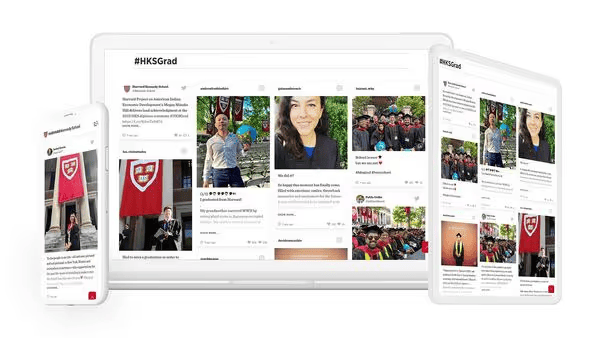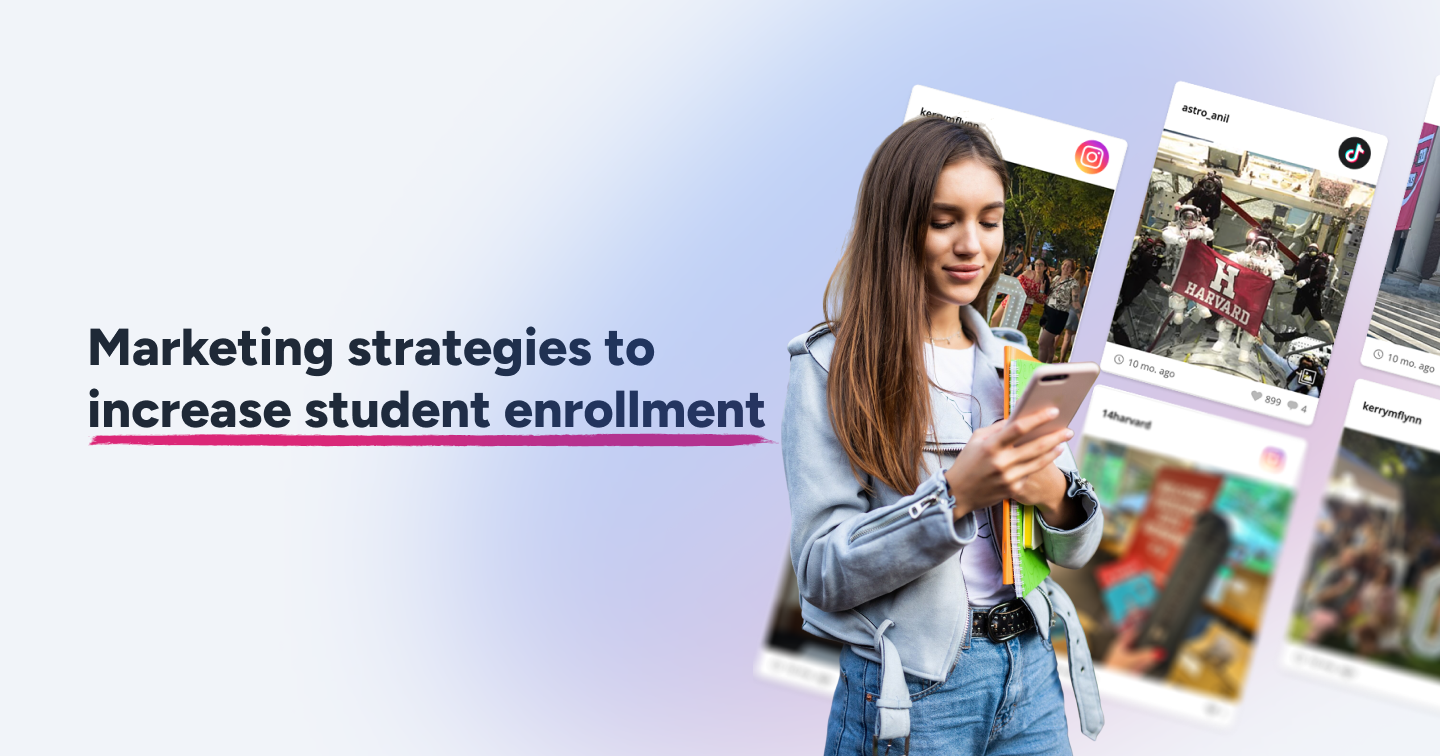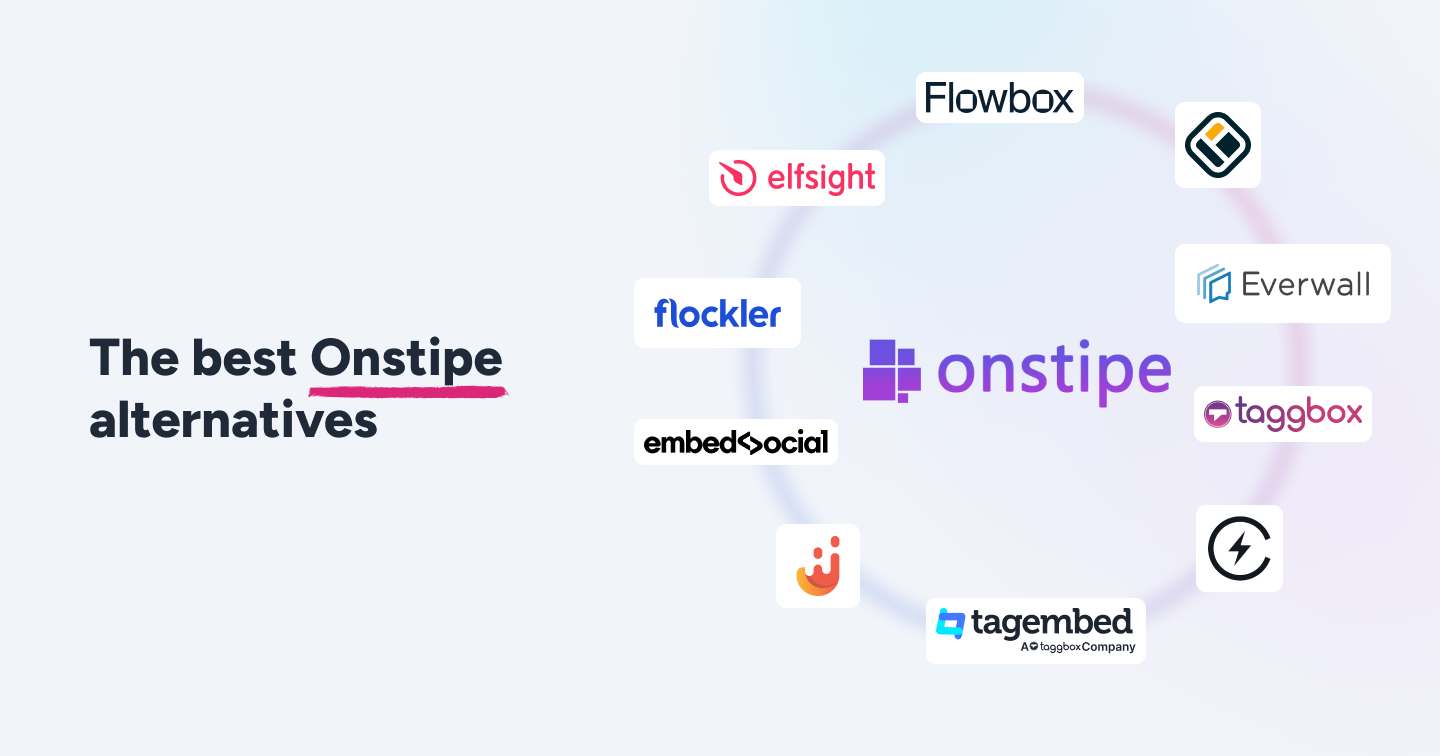Summary
- With rising competition, educational institutions must find unique and sustainable ways to engage prospective students and increase enrollment.
- Some of the most effective strategies include leveraging alumni networks and their testimonials, using data and analytics from your digital assets, and more.
- Go with a marketing strategy that best suits your budget, is easy to implement and will help your institution stand out.
Educational institutions, on average, are reported to spend about $2000 to enroll just one student, underscoring how competitive and expensive student recruitment has become.
With fewer students to target and increased competition, marketing teams must explore new ways to attract audiences cost-effectively. In this blog, we will explore the best marketing strategies to increase student enrollment.
These strategies will help you attract and engage more students, increasing student enrollment in the long run.
How to Increase School Enrollment: Best 5 Enrollment Marketing Strategies
1. Improve Digital Presence With Social Media Aggregators
Your school or university website is an excellent asset for communicating value and improving enrollment. However, showcasing academic programs and placement details alone may no longer work so well.
This is where social media aggregators come in. Recent trends show that 62% of Gen Z prefer social media and UGC over traditional advertising. Although parents care about their children's career prospects, 18-year-olds are also interested in life on campus. Showcase extracurricular activities that students can opt for and what it's like to be on campus.
You can embed live social media feeds on websites using tools like Flockler. This means a part of your social media is displayed on the website. You can choose to curate which aspect of your X (Twitter) or Instagram feed you want to display on the website.
Your audience is more likely to accept user-generated content over sponsored testimonials. For example, when students share their opinions about your educational institution organically on social media, you can embed that content on your website to gain social proof.
2. Leverage Alumni Testimonials to Promote Programs

One of the best strategies to increase student enrollment is leveraging alumni testimonials across social media, website, flyers and video marketing. Create a robust alumni program and invite alumni to share their experiences with the university and their respective courses.
Use your email marketing channels to keep in touch with alumni. Share personalised newsletters with details and updates about the university or school; this way, you are always connected with them and request testimonials or stories to share with the broader network for marketing purposes.
Another good example is utilizing your social media channels to highlight testimonials. Create a hashtag feed and get your alumni to use it while posting on social media about the institution. You can take it one step further and show the feed on your website. Flockler lets you easily add a particular hashtag feed to any digital asset. Harvard shares Alumni and Giving Day hashtag feeds on its website using Flockler to build awareness of fundraising campaigns and keep supporters up to date on recent events.
Connect Instagram and other channels like LinkedIn to your website to showcase live-updating feeds. This would help a potential student learn more about the organization and serve as social proof for the educational institution.
3. Collect and Analyze Data for Enhanced Performance
A study shows that data-driven marketing strategies increase college enrollment by up to 25%. This means that when marketing teams use analytics to understand user behavior and target their campaigns accordingly, the potential wins are high.
By using tools like Google Analytics, one can figure out which page gets the most visitors and leverage that webpage to maximise output. You can also use first-hand data from your college database to target future students based on their native state or country. See how many come from countries where English isn’t a common language. Localize your website content so students and parents can easily understand your values.
If your team uses a CRM tool to manage communications and marketing, review analytics on “clicks” and “segmentation” to understand user behavior. For example, if data shows that your audience is more responsive to posts and content around arts and musical courses, this is a sign to deploy a targeted approach and promote programs with such components.
Social media marketing is also an excellent source of data and analytics around user behavior. Popular apps like Facebook, Instagram, and LinkedIn provide information such as the number of impressions and reach of your post, along with the likes for each individual post. You can use such data to run targeted ads based on age, location, behavior and interests.
Review your marketing plan regularly and optimize from time to time using data-driven metrics. This will improve your audience engagement rate and student enrollment.
4. Utilize SEO and Social Media Marketing for Branding
SEO is one of the best strategies to increase student enrollment. Students and parents often search on Google or other search engines for courses and universities. You can easily attract them to your institution by improving website SEO, and ranking at the top of search results.
Search engine optimization goes way beyond optimizing your website and content for keywords. You need a comprehensive SEO strategy to attract your target students. To increase local admissions, improve local SEO, and focus on your institution’s reviews and ratings to increase visibility.
On the other hand, social media marketing can help you share student stories and career opportunities on platforms where students are more likely to engage. Instagram and Facebook would be a great place to start. Even LinkedIn makes sense when you’re offering professional upskilling courses. You can use the same social content on your website to increase time on the page for visitors, engaging them with stories and testimonials.
As for SEO, there are a lot of ways people could find you on Google. Go to Google Search Console and analyze the queries people use to locate you. Many of these queries might be informational, and you will need to mould your content strategy to target informative blogs.

For example, the University of California wrote a blog on data science to educate readers seeking more information. It ranks fourth on Google in the US for "What is data science” and gets around 15,000 monthly organic traffic.
You can also use your website and social media channels to build a strong digital presence and eventually improve student enrollment.
5. Strengthen Video Marketing and Show Virtual Tours
Visually appealing videos often come in handy during the research phase for potential students. As per statistics, 87% of institutions reported higher application rates after integrating video content into their marketing mix. Whether it is virtual campus tours or students' Q&A, video marketing is also one of the best enrollment strategies for private schools and other institutions.
Video isn’t just a storytelling tool; it’s a full‑funnel marketing asset. Awareness‑stage videos, such as short Instagram Reels or TikTok clips about campus life, attract interest. Mid‑funnel content, such as student and alumni testimonials, builds trust and social proof. Lastly, bottom‑funnel videos like “How to Apply” or countdowns to deadlines encourage conversions.
Video marketing as a strategy is bound to work with the current generation of Gen Z and Gen Alpha, as they are most likely to find it more appealing and consume such visual content.
Pro Tip: Leverage Social Proof and UGC with Flockler
When it comes to marketing strategies that drive real enrollment growth, nothing builds trust faster than authentic voices. Prospective students want relatable content, such as real stories, campus experiences, and testimonials from peers. User‑generated content (UGC) and social proof make your institution’s message credible, human, and emotionally persuasive.
With Flockler, institutions can easily collect and display authentic student and alumni content from platforms such as Instagram, LinkedIn, and Facebook. The tool helps you embed curated social feeds across your website, showcasing vibrant college life. This not only boosts engagement but also gives an insight into your institution and its culture.
By integrating Flockler into your enrollment strategy, you can turn social content into a powerful tool that improves student enrollment.
FAQs
How can social proof help increase student enrollment?
Social proof, such as campus events, student testimonials, and alumni stories, helps engage not only potential candidates but also their parents. It makes your institution feel more authentic and keeps your name top of mind.
What role does SEO play in student recruitment?
SEO improves your discoverability, keeping your institution at the top of search results when students are looking for admissions. A strong SEO strategy drives qualified traffic to your website, which increases inquiries and applications.







